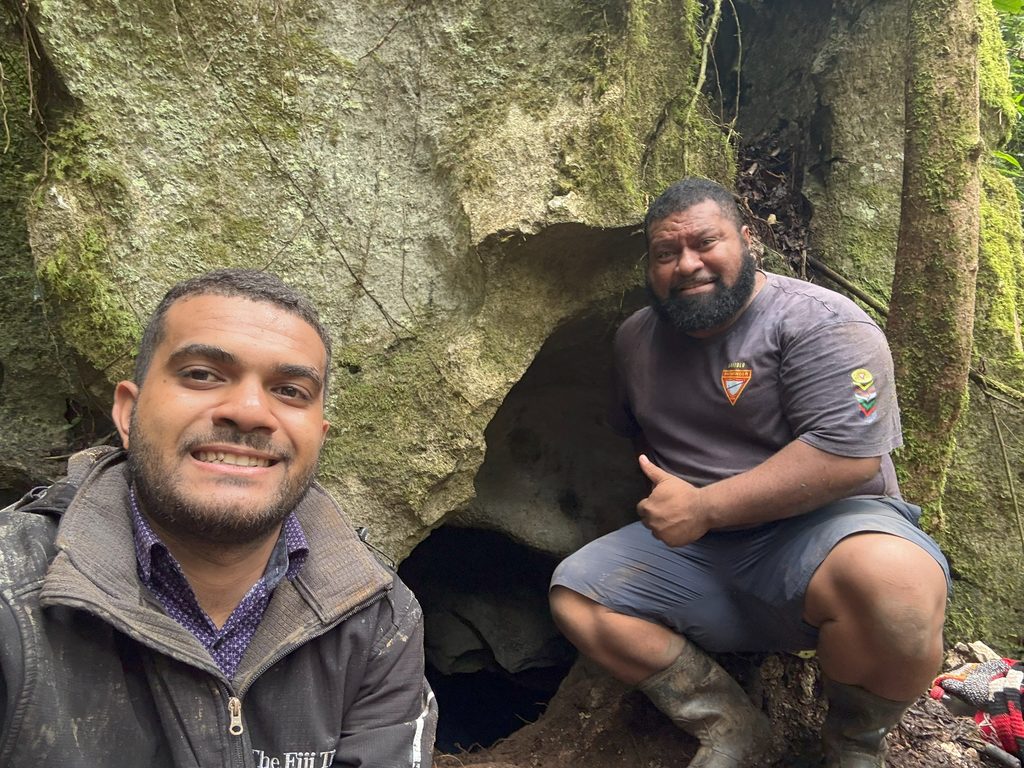If I have to describe the word daunting in my own way, it would be the feeling of waking up at 5am, after only three hours of restless sleep, my head still buzzing from an intense grog session that wrapped up at 1am the previous night, and realising I am about to embark on a three-hour hike and cave exploration.
In my opinion, while a good journalist always prepares well before an important assignment, a great journalist takes the bull by the horns—no matter how unprepared one may be.
In last week’s Discovering Fiji piece, we explored the recent discovery of a cave by the villagers of Nalidi in the district of Nakorotubu, located in the province of Ra.
We touched on the significance of the find, the various objects and materials discovered inside, and the mystery of why its existence remained virtually unknown—despite its location adjacent to the ancient village mound of Nakorowaiwai, from where the people of Nalidi originated from.
This week, we share a journalist’s reflection on the surreal experience of trekking through dense tropical forests, capturing every moment of the journey, and the thrill of stepping into the unknown—the cave of the ancient Nakorowaiwai people.
Into the darkness
Our group, consisting mainly of Nalidi villagers, also included fellow Na iLalakai reporter Viliame Ravai. We were led by the turaga ni koro, or village headman, who was both our host and protector during our stay in Nalidi. We affectionately referred to him as Turani.
Leaving the village at 6am on Tuesday, February 4, we arrived at the cave entrance around 9am. But let me be clear—nothing prepared me for the rush of euphoria that surged through my body when stepping into the cave.
My personal guide was a young man named Peni Kedremau, the first person to discover and explore the cave in January this year.
The air inside was breathable but grew thicker as we ventured further. It’s wise to carry plenty of water—at least to ensure your blood gets some form of oxygen relief in the form of H2O.
The walls were damp and had a waxy texture, with stalactite mineral formations spiralling down from the ceiling and jutting up from the ground along the main route.
“Look at the sides as well—you’ll notice smaller tunnels leading to God knows where,” Peni told me.
Sure enough, as I scanned the walls, I saw narrow tunnels, some just large enough for a grown man to squeeze through, though with great difficulty.
After about 15 minutes, we reached what appeared to be a dried-up subterranean waterfall. What remained was a rock pool, fed by fresh filtered water dripping directly from the ceiling above.
“We placed this large blue drum here to collect water. It serves as a rest stop. Have some—it’s the freshest water you’ll ever taste,” Turani said.
We obliged, cupping our hands to drink. It was a much-needed boost. And yes, after being accustomed to Water Authority of Fiji-supplied water, the coolness and purity of this natural water hit me like a brick—but in the best way possible.
Further inside, we came upon a section where water flowed from a half metre-wide horizontal opening in the rock wall. Peni turned to me and beckoned.
The fear of the unknown
“Come on! Don’t be scared—just follow my lead,” he said as he wriggled into the gap.
“Here goes nothing,” I muttered to myself, hesitating for a moment before squeezing through. Surprisingly, I managed with relative ease.
The next chamber was smaller than the one we last exited, so much so that we had to crouch—and, in some areas, crawl on our knees—because of the low ceiling.
Eventually, we reached what resembled an uneven stairway, leading down to an almost oval-shaped opening in the ground.
“Down here is that chamber I was telling you about—the one with the throne-like rock and glittering walls,” Peni called up to me.
By now, I was drenched in sweat and water, and I realised my shorts had ripped—likely from all the wriggling.
As I analysed the oval-shaped opening I had to climb through to reach the hidden chamber, I quickly decided—I wasn’t going to fit.
“Mai! Kua ni rere! (come, don’t be afraid),” voices hurled from around me said.
I stared down into the hungry abyss. I’ve made it this far—it would be a waste if I don’t at least try, I thought.
So, I took off my jacket and climbed down. My legs slipped through effortlessly up to my belly before the rocky outline of the opening halted my descent.
Turani, watching closely, gave me some advice. “Try rotating your body while lowering yourself slowly—you can make it.”
For 10 to 20 minutes, I tried every technique and position I could think of, but I just couldn’t squeeze through.
I then attempted to pull myself back up—but I had contorted my body so much that my worst fear dawned on me.
I was stuck and I only wished I was a professional contortionist.
A sudden wave of claustrophobia washed over me.
Sensing my struggle, Turani climbed down to where I was. With a strong tug, he pulled me free. I scrambled back to the safety of the waiting area above and collapsed to the ground—exhausted but relieved.
I handed my camera to Peni, asking him to capture footage and take pictures of the chamber below.
Not long after, he and the rest of the group climbed back up, and Turani accompanied me back through the narrow passage towards the main route.
“Let’s go—the others are waiting for us outside,” he said, patting me on the back.
I had never been so happy to heart the words “let’s return”.
Exploring a cave is not for the faint-hearted. It is like being a captive in the belly of a cavenous beat.
In my mind, I said admiringly: “Ra sa Ra ga.”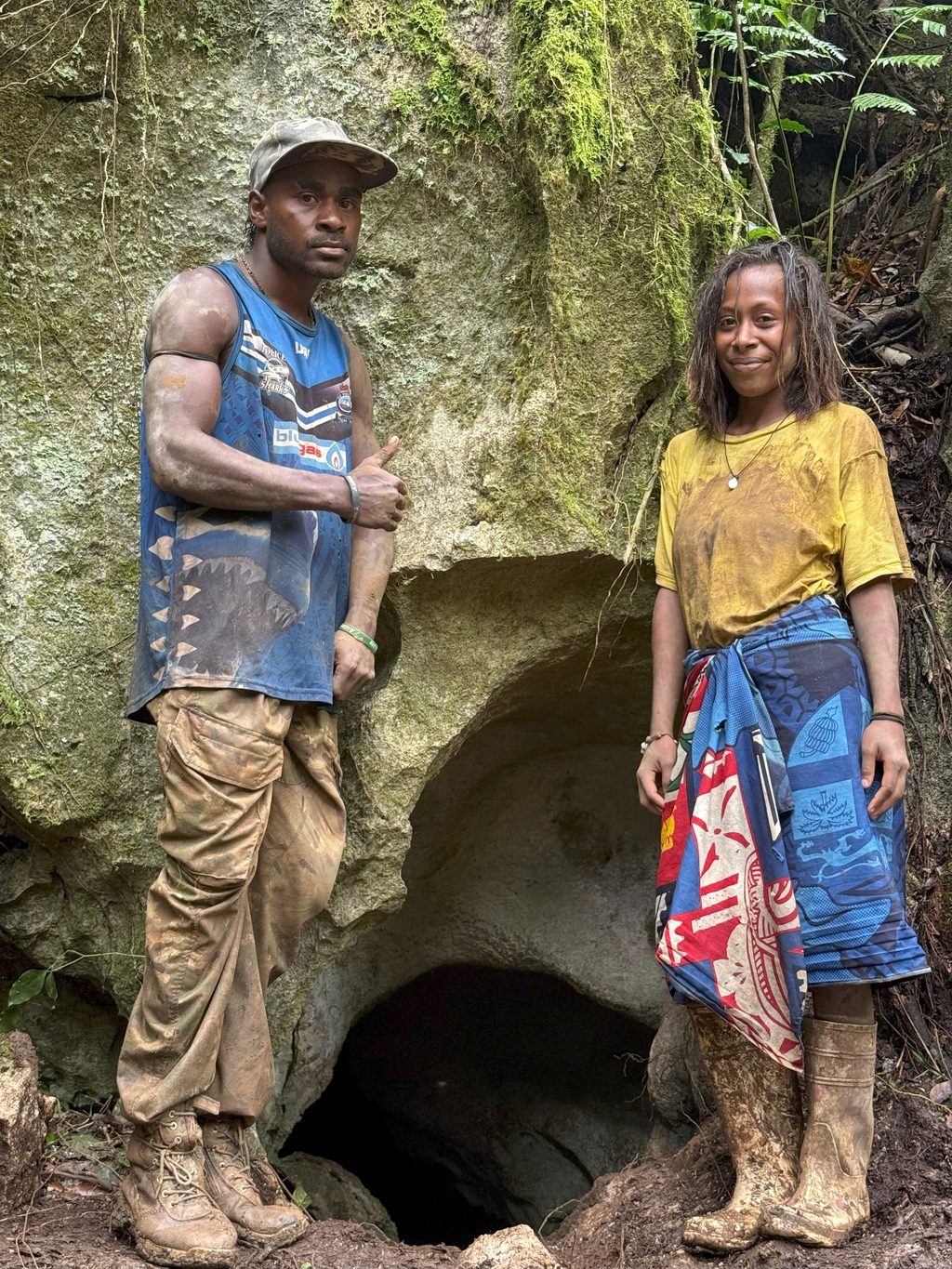
Peni Kedremau and his wife Sera at the cave’s entrance. Picture: ALIFERETI SAKIASI
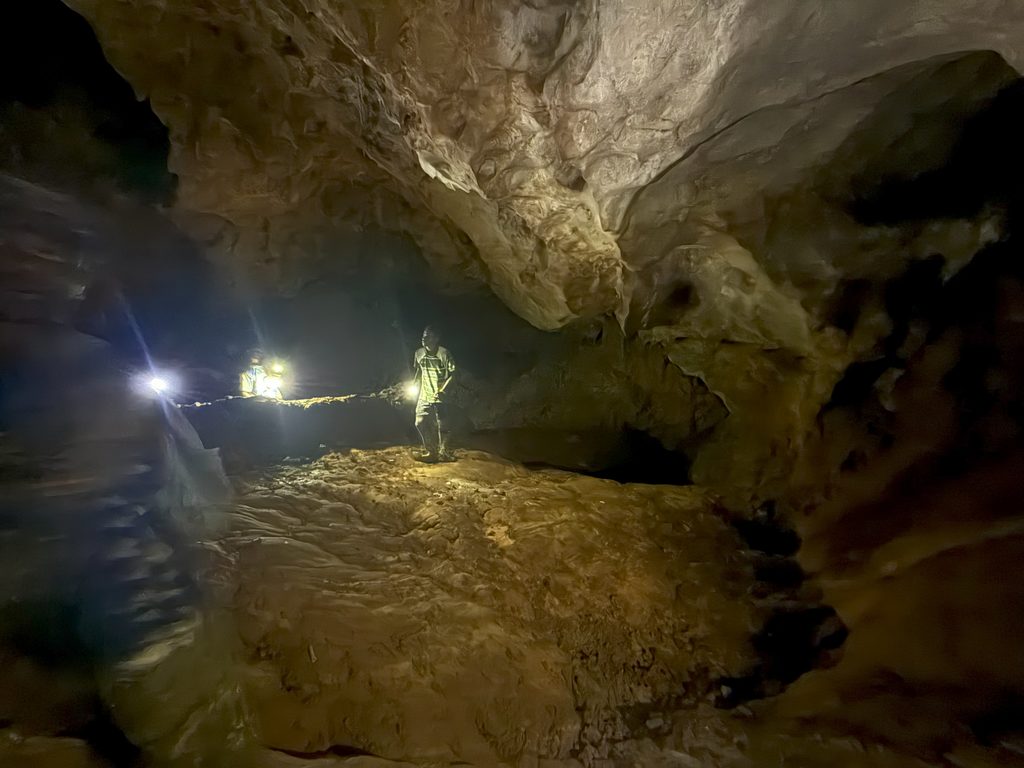
The large dome-like space that can only be accessed via a small
oval-shaped gap. Picture: ALIFERETI SAKIASI
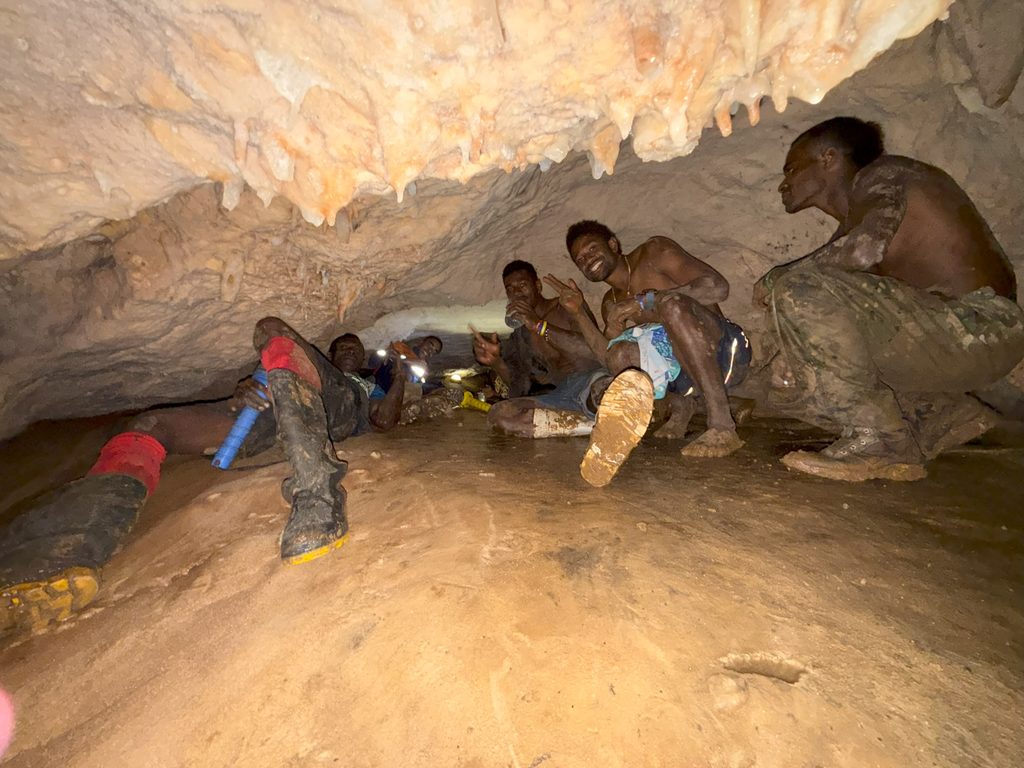
The boys from Nalidi led by Peni (far right) making their way through a narrow gap. Picture: ALIFERETI SAKIASI
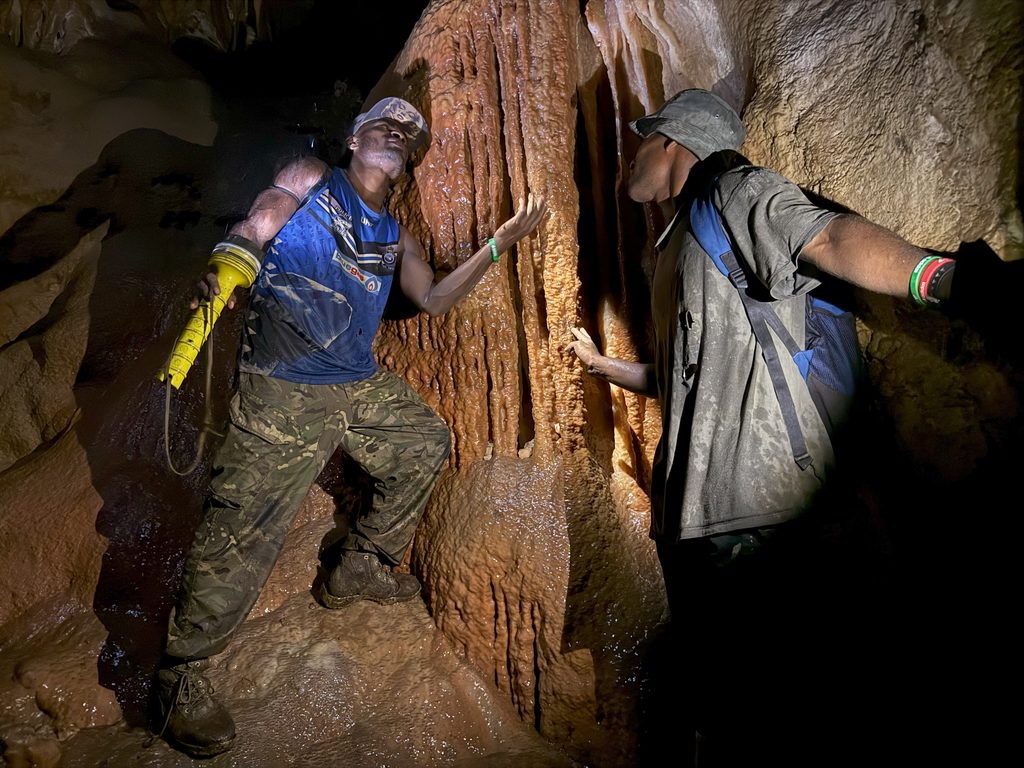
Peni stands next to a stalactite formation in the cave.
Picture: ALIFERETI SAKIASI
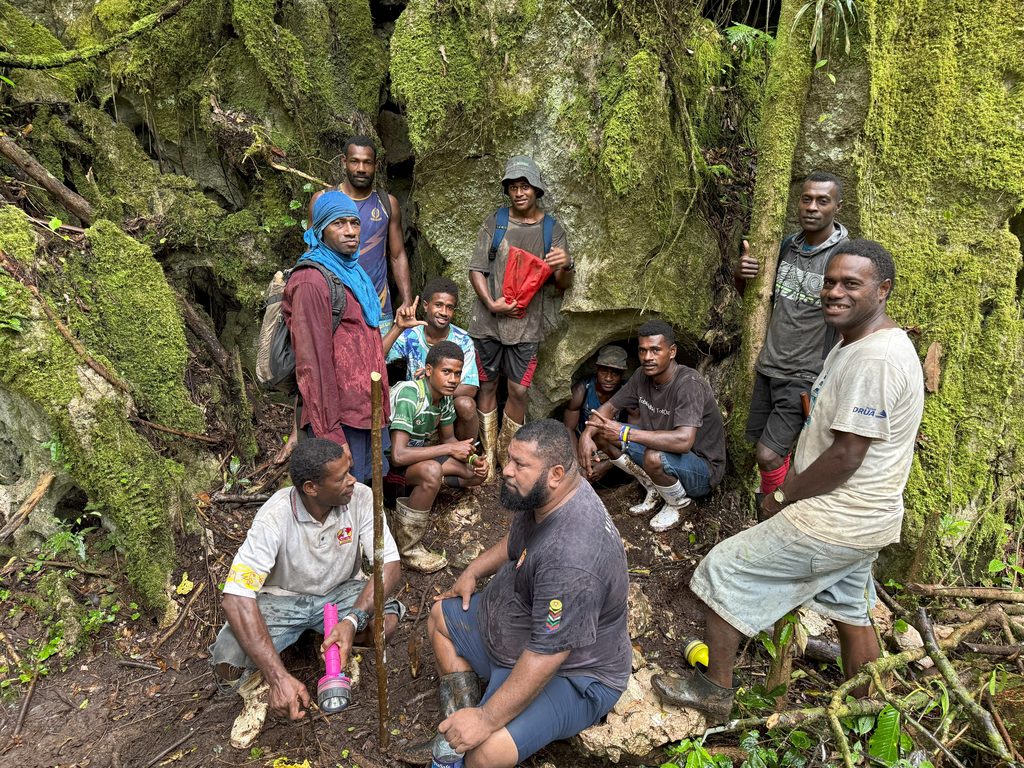
The cave expedition group after exiting the cave. Picture: ALIFERETI SAKIASI
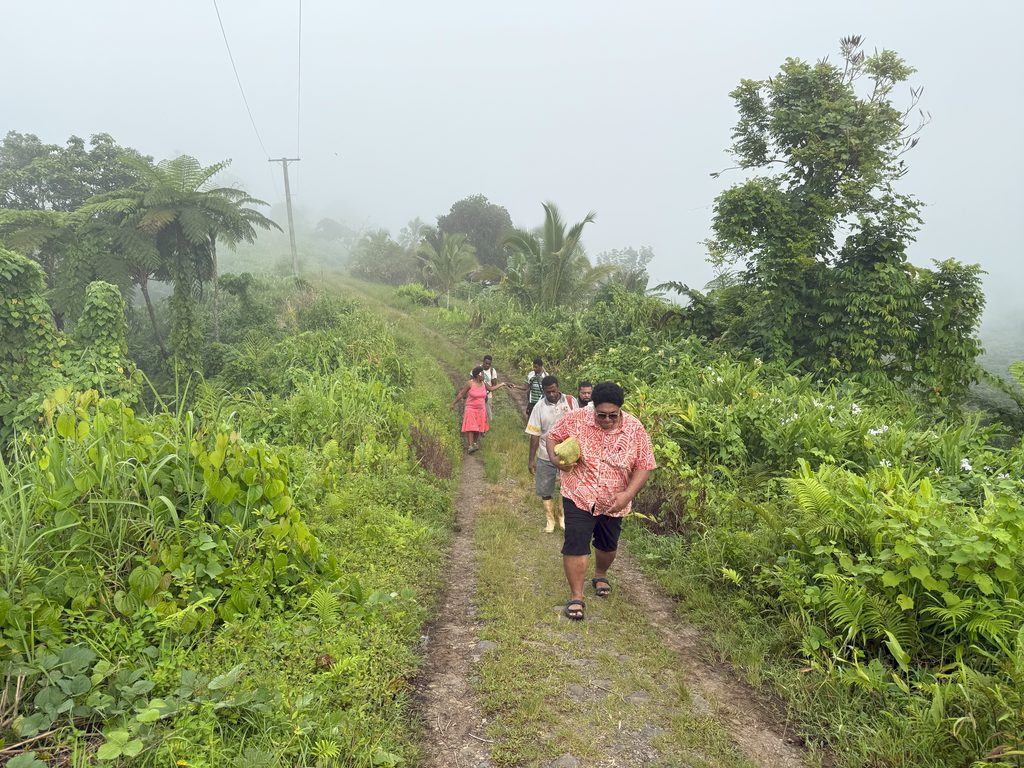
Making our way through Uluivuda’s misty track earlier in the day, trying to beat the glare of sunrise. Picture: ALIFERETI SAKIASI

